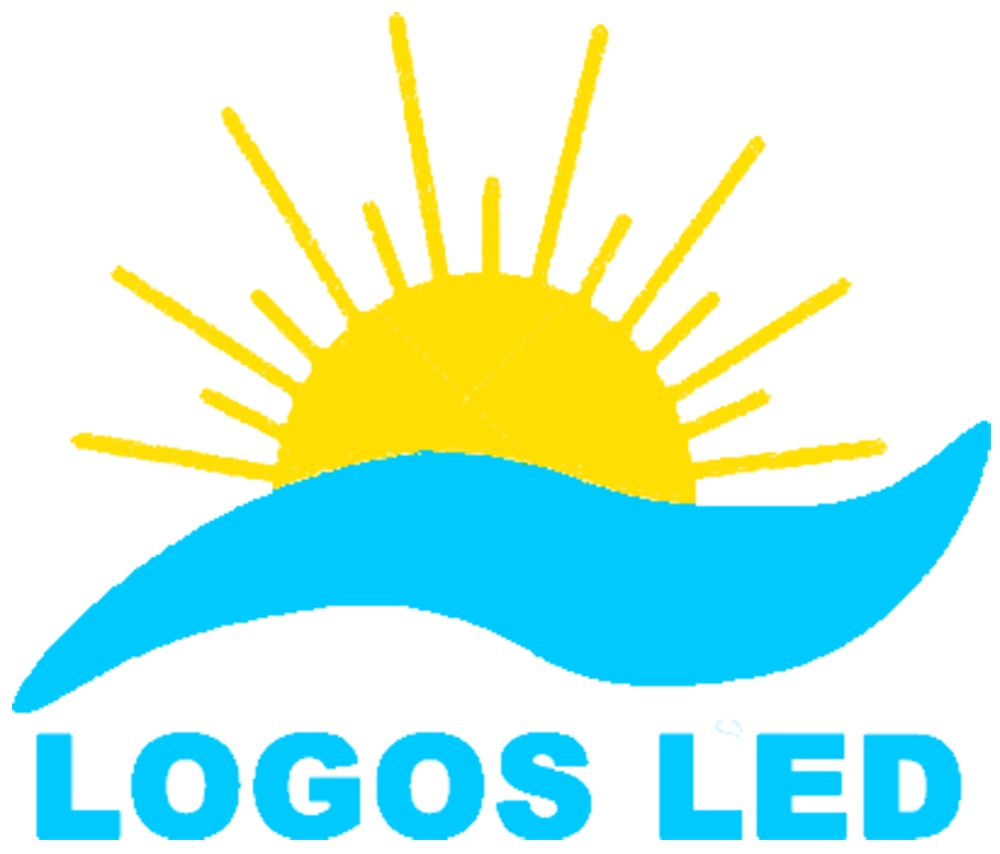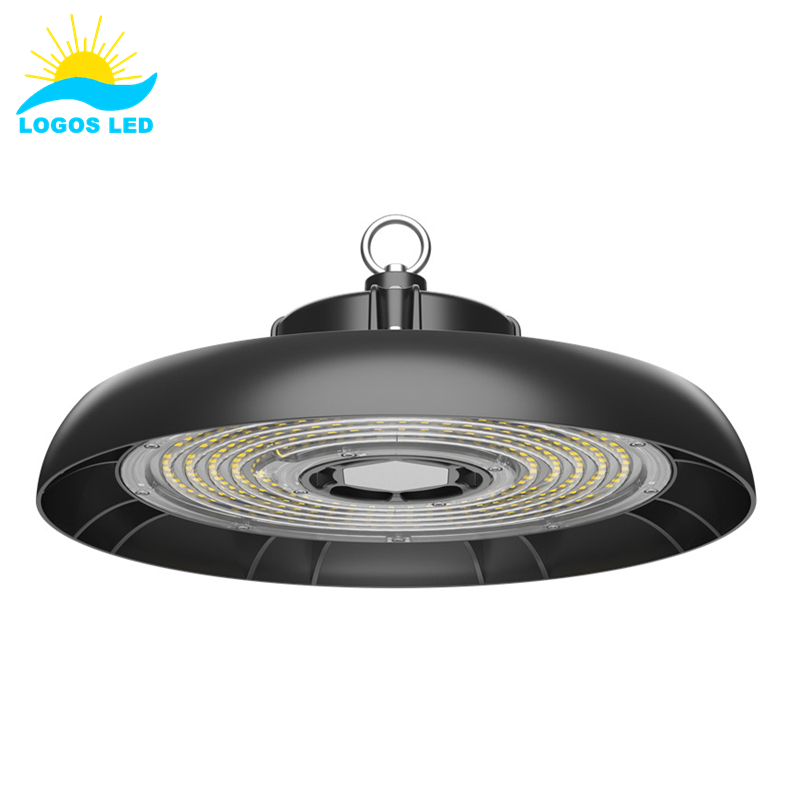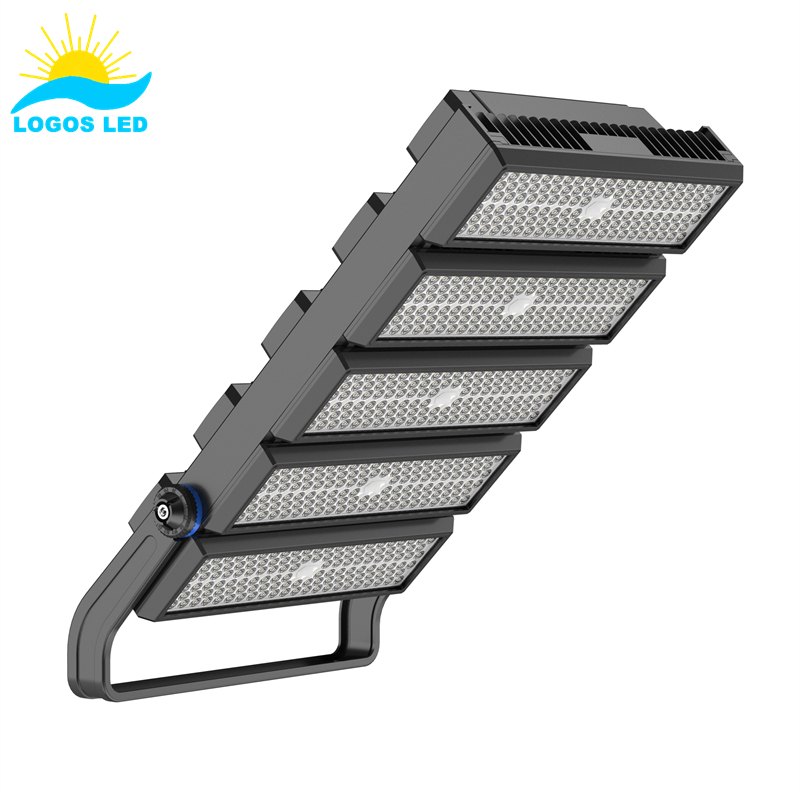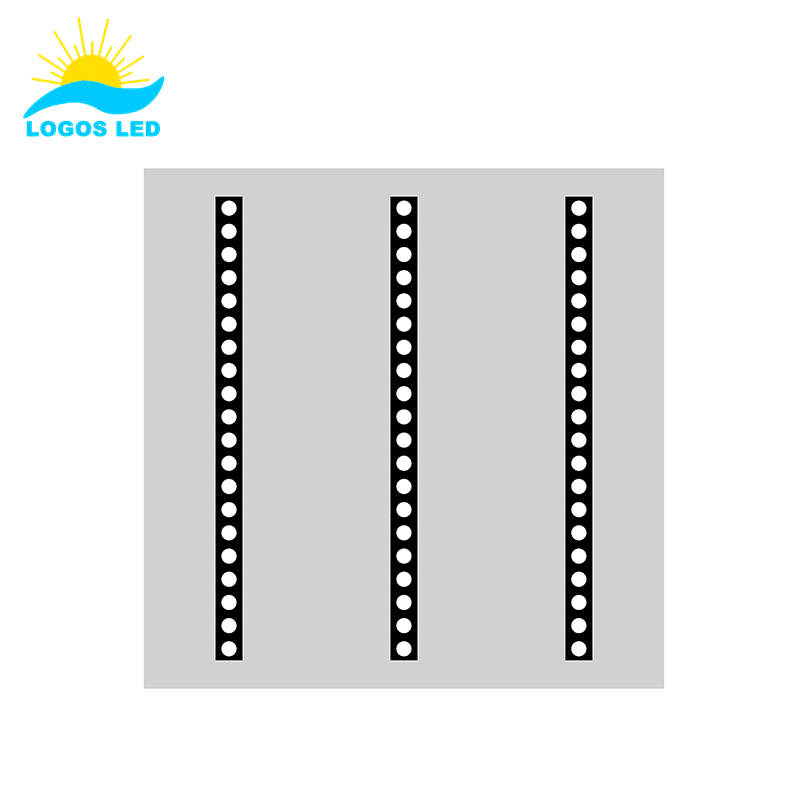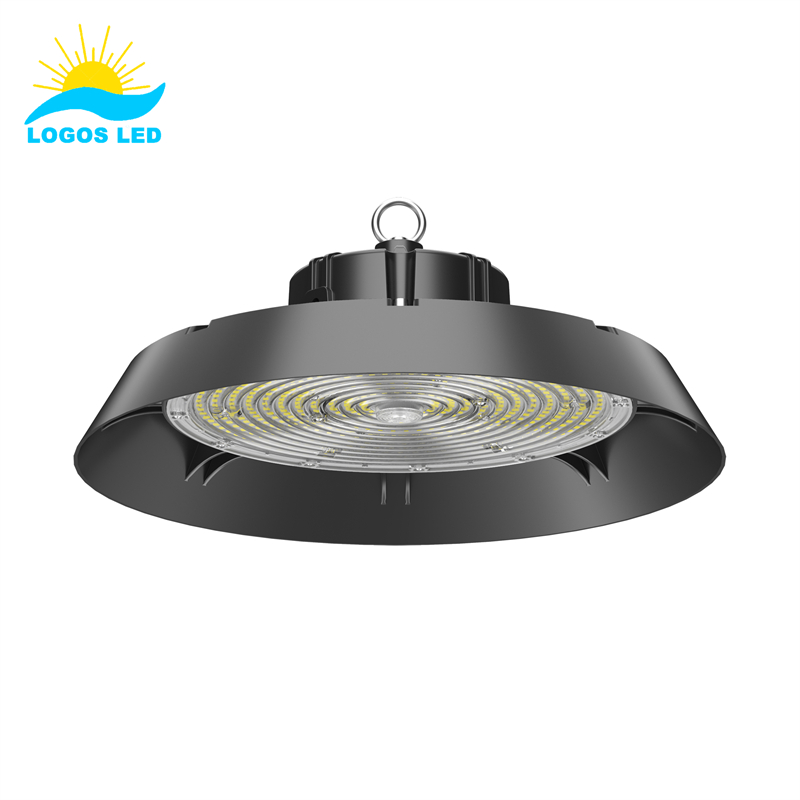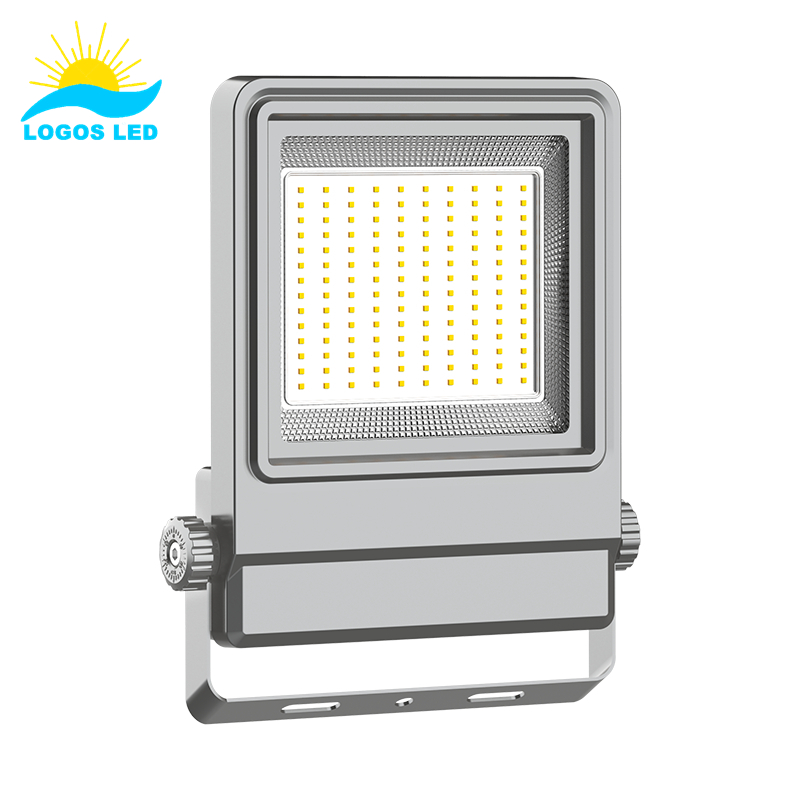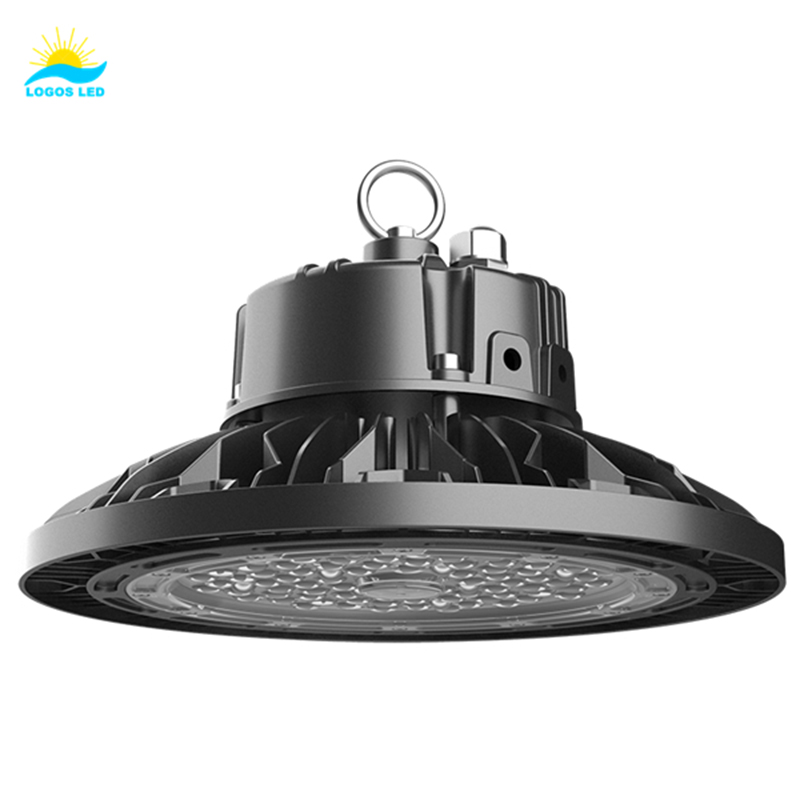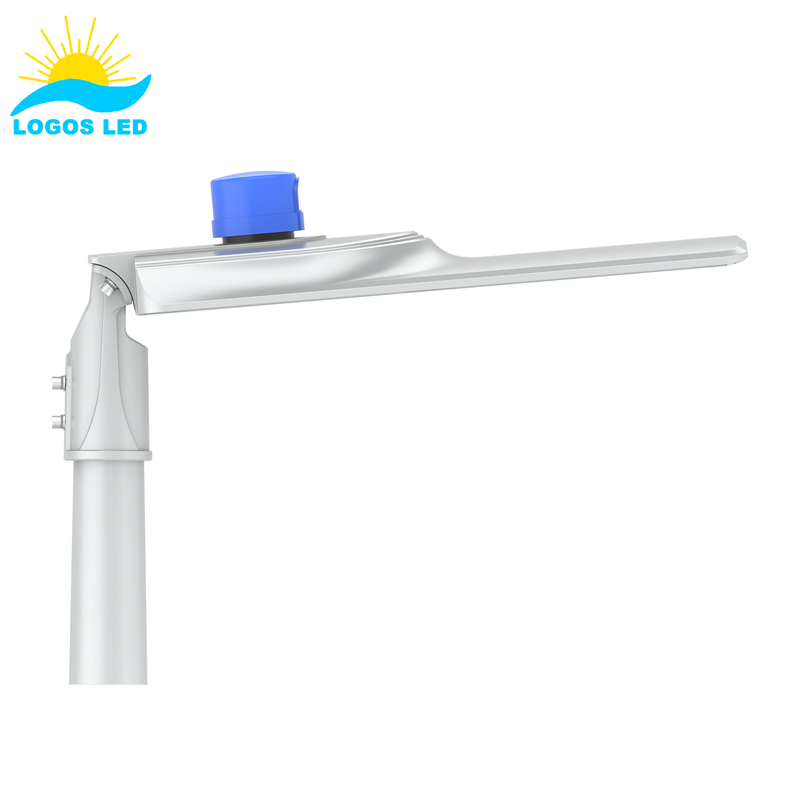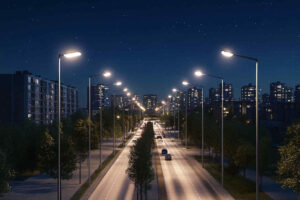Are you finding it tough to get the right lighting levels for your tennis court? Poor lighting can impact gameplay, safety, and visibility—leaving players frustrated and even increasing the risk of injuries. If your court isn’t properly lit, it can hurt performance and create unsafe conditions. But don’t worry! By following the IES (Illuminating Engineering Society) standards, you can make sure your tennis court has the right lighting setup. Keep reading to learn the best practices for tennis court lighting.
The IES (Illuminating Engineering Society) sets the bar for sports lighting, ensuring safety, performance, and great visibility. Their guidelines cover everything from brightness levels to uniformity and glare control—key factors that improve player performance, reduce injuries, and enhance the experience for spectators. Plus, following IES standards helps venues be more energy-efficient, lowering costs while ensuring top-notch lighting quality, even for televised events.
Now, let’s break down the key lighting requirements for tennis courts and why they matter for the game.
Table of Contents
The Role of IES in Sports Lighting
The IES plays a key role in sports lighting by setting standards that ensure the right brightness, visibility, and safety. These standards cover everything from lux levels1 to pole placement, ensuring that sports facilities—whether courts, fields, or stadiums—have the best lighting setup. By following these guidelines, venues can create an optimal environment for athletes while making sure fans get a great viewing experience.
Understanding how IES standards shape sports lighting can help you design an effective system that meets the right requirements.
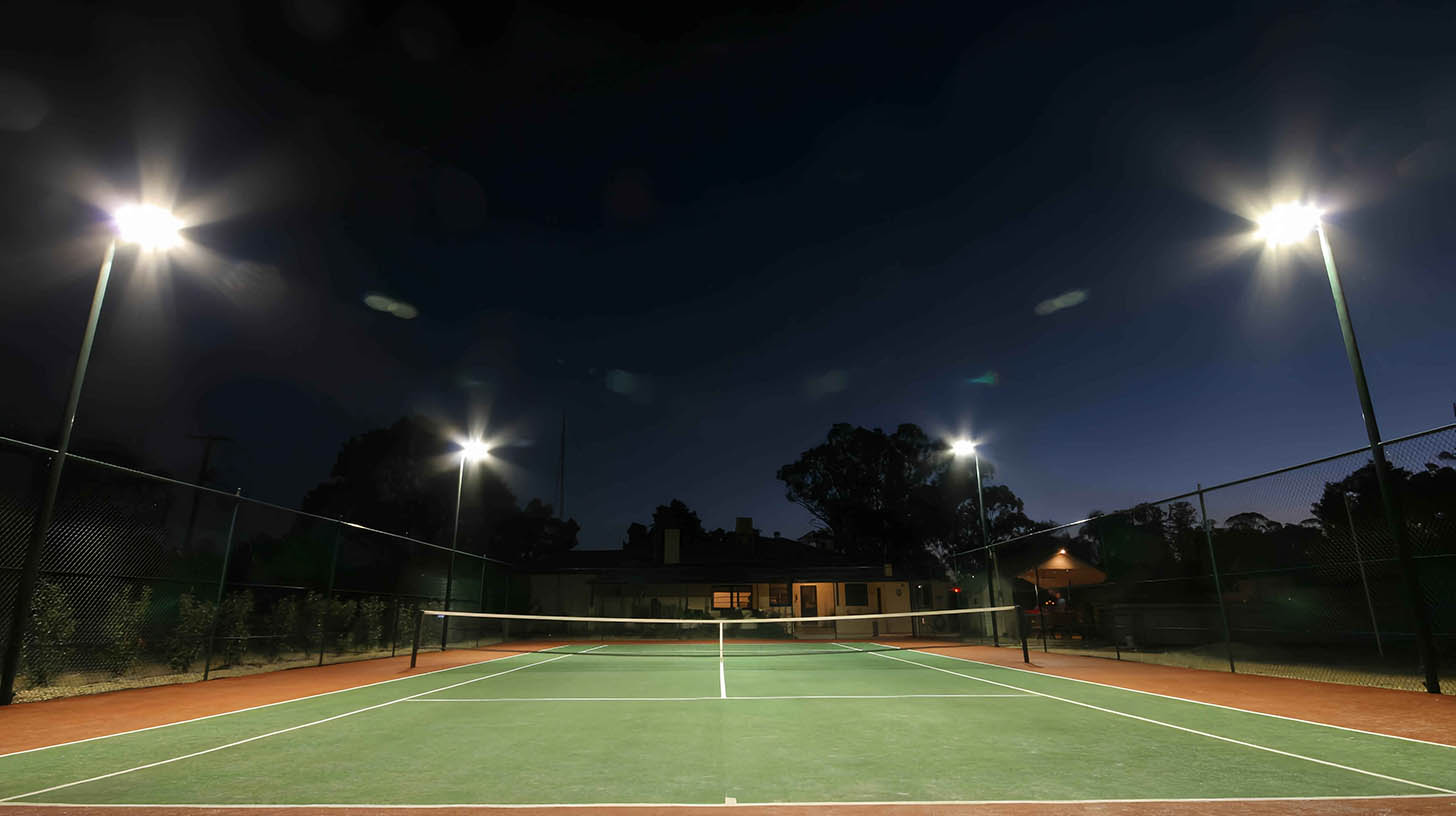
What does IES stand for in sports lighting?
IES stands for the Illuminating Engineering Society, an organization that focuses on advancing lighting design and technology. In the world of sports lighting, IES standards set the benchmark for proper illumination. These standards ensure an even spread of light, the right brightness levels, and minimal glare—helping both players and spectators enjoy the game without visibility issues. Without these guidelines, lighting setups might not meet the needs of competitive sports.
What are IES lighting standards for sports?
IES lighting standards cover a range of critical factors, including required lux levels for different sports, how evenly the light should be distributed, and how much glare is acceptable. For example, professional sports venues may need over 1000 lux for clear visibility, while recreational courts might only require 30 lux. The guidelines also dictate pole height and positioning to ensure even coverage across the playing surface. By following these standards, venues can provide players and spectators with a safe and high-quality experience.
How does IES impact the design of sports lighting?
IES standards directly influence how sports lighting is designed, ensuring that each system meets the needs of the specific sport and venue. Their guidelines cover important aspects like light placement, angle, and uniformity—ensuring there are no dark spots on the field or court. Whether it’s a small community court or a major stadium, IES standards help create the best possible lighting conditions for both athletes and fans.
Why is IES important for sports field lighting?
IES guidelines are essential because they ensure lighting systems meet both technical requirements and the needs of players and spectators. These standards regulate factors like brightness, uniformity, and glare control—helping improve player performance, enhance the viewing experience, and reduce injury risks. Without these guidelines, poor lighting could lead to unsafe playing conditions, distractions, and even game delays due to visibility issues.
What are the lux levels recommended by IES for different sports?
The IES has specific lux recommendations based on the type of sport and level of play. Recreational fields may only need 30 lux, while amateur and professional venues require between 300 and 1000 lux. For example, tennis courts typically need around 500 lux for night games, while large football stadiums require over 2000 lux to meet broadcast-quality standards. These recommendations help ensure every game is played with the right visibility conditions.
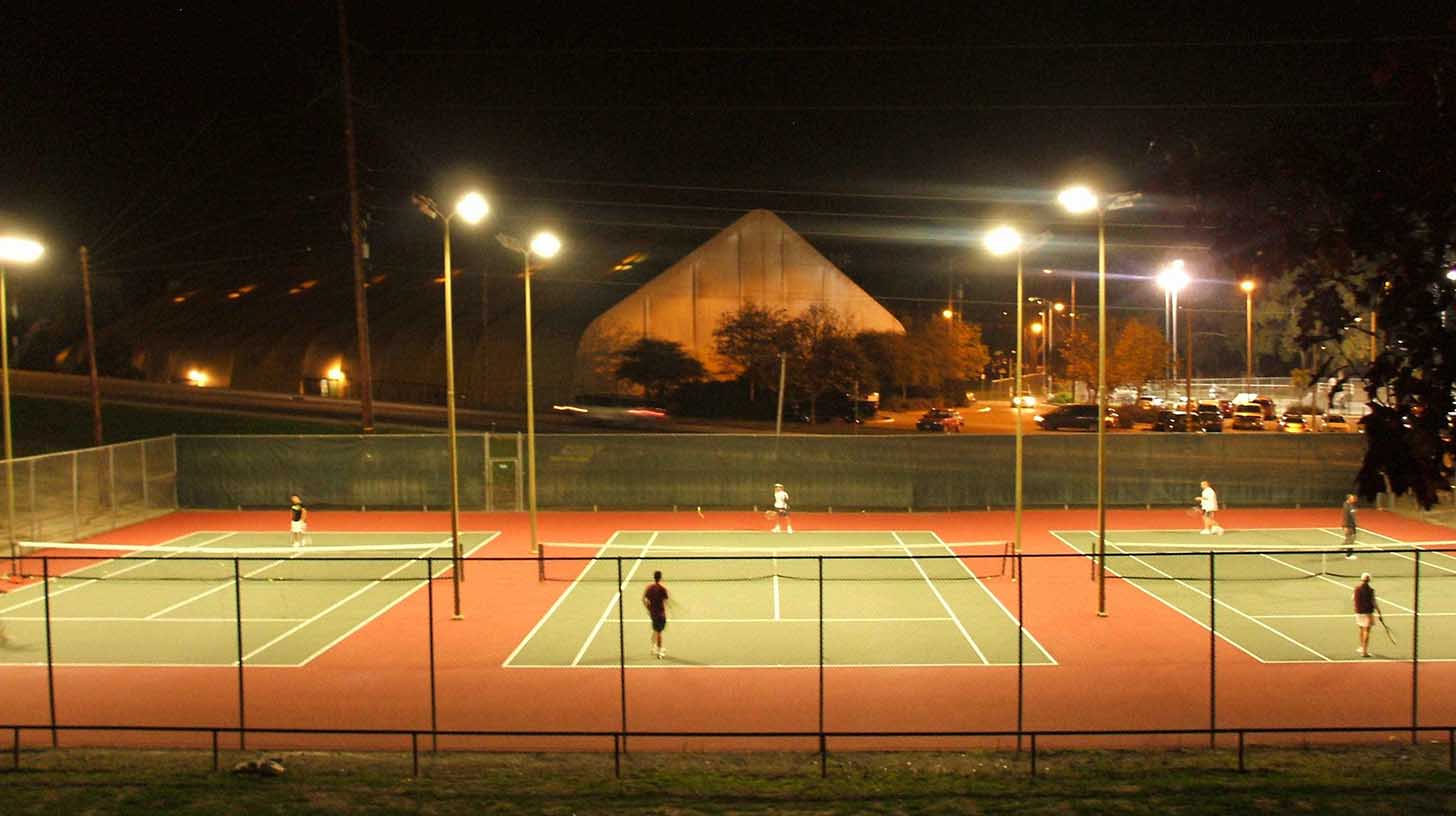
LED Tennis Court Lighting
Key IES Sports Lighting Standards
When setting up sports lighting, following IES (Illuminating Engineering Society)2 standards is essential. These guidelines focus on safety, performance, and energy efficiency while also ensuring a great experience for players and spectators. Let’s break down the most important IES standards, including brightness levels, uniformity, glare control, color rendering, and efficiency.
By sticking to these key standards, sports venues can provide high-quality lighting that improves visibility, reduces distractions, and saves on energy costs.
Illuminance Levels
Illuminance refers to the amount of light that reaches the playing surface, measured in lux. The IES sets specific lux requirements for different sports, depending on the level of play. Recreational courts typically need at least 30 lux, while competitive and professional venues should have between 300 and 1000 lux. For televised sports, the required levels may exceed 2000 lux to ensure clear visibility for both players and viewers. Proper lighting levels are crucial for safety, performance, and an enjoyable experience.
Below is a table for IES Sports lighting standards per sport and competition level:
| Sport | Outdoor/Indoor | Class III / IV (lux) |
Class II / III (lux) |
Class I / II (lux) |
| Baseball | Outdoor | 200 – 300 | 300 – 500 | 500 – 1100 |
| Football | Outdoor | 200 – 300 | 300 – 500 | 500 – 1100 |
| Basketball | Outdoor | 100 – 200 | 200 – 300 | 300 – 500 |
| Basketball | Indoor | 200 – 300 | 300 – 500 | 500 – 1100 |
| Soccer | Outdoor | 200 – 300 | 300 – 500 | 500 – 1100 |
| Softball | Outdoor | 200 – 300 | 300 – 500 | 500 – 1100 |
| Tennis | Outdoor | 100 – 200 | 200 – 300 | 300 – 500 |
| Tennis | Indoor | 200 – 300 | 300 – 500 | 500 – 800 |
| Pickleball | Outdoor | 100 – 200 | 200 – 300 | 300 – 500 |
| Pickleball | Indoor | 200 – 300 | 300 – 500 | 500 – 800 |
| Ice Hockey | Indoor | 200 – 300 | 500 – 800 | 1100 – 2200 |
| Swimming | Indoor | 200 – 300 | 300 – 500 | 500 – 800 |
| Gymnasium | Indoor | 200 – 300 | 300 – 500 | 500 – 800 |
Uniformity Ratios
Uniformity ratio measures how evenly the light is distributed across the playing surface. A well-balanced uniformity ratio ensures that no area of the court or field is too dim or overly bright. The IES recommends maintaining a uniformity ratio of at least 0.6 for recreational sports and 0.7 for professional-level play. This consistency allows players to track the ball and movements of other players without difficulty while also minimizing glare and distractions. Uneven lighting can create shadows or bright spots, which can hinder visibility, affect performance, and even pose safety risks.
IES Sports lighting standards: Uniformity ratio per sport & competition level:
| Sport | Class III / IV | Class II / III | Class I / II |
| Baseball | 2:01 | 1.7:1 | 1.5:1 |
| Football | 2.5:1 | 2:01 | 1.7:1 |
| Basketball | 2:01 | 1.7:1 | 1.5:1 |
| Soccer | 2.5:1 | 2:01 | 1.7:1 |
| Softball | 2:01 | 1.7:1 | 1.5:1 |
| Tennis | 2:01 | 1.7:1 | 1.5:1 |
| Pickleball | 2:01 | 1.7:1 | 1.5:1 |
| Ice Hockey | 2:01 | 1.7:1 | 1.5:1 |
| Swimming | 2:01 | 1.7:1 | 1.5:1 |
| Gymnasium | 2:01 | 1.7:1 | 1.5:1 |
Glare Control
Glare happens when intense light causes discomfort or impairs vision, affecting both players and spectators. Managing glare is a crucial aspect of sports lighting to ensure that visibility remains clear and distraction-free. The IES emphasizes minimizing glare, particularly from lighting poles and fixtures, to prevent interference with gameplay. Proper fixture placement and the use of glare-reducing technologies, such as shields and diffusers, can significantly improve lighting conditions. By following these standards, sports venues can create a more comfortable and safe environment for both athletes and fans.
Color Rendering Index (CRI)
The Color Rendering Index (CRI)3 measures how accurately a light source displays colors compared to natural daylight. A higher CRI means better color accuracy. For sports lighting, the IES recommends using lights with a CRI of at least 70, but for professional and televised events, a CRI of 80 or higher is preferred. A high CRI ensures that the colors of uniforms, equipment, and the playing surface are displayed accurately—especially crucial for television broadcasts. Proper color rendering enhances the viewing experience, making it easier for both players and spectators to follow the game.
Energy Efficiency
Energy efficiency is a key factor in modern sports lighting. The IES advocates for energy-efficient lighting solutions4, such as LEDs, which provide the necessary brightness while consuming less power. LEDs offer benefits like a longer lifespan, lower maintenance costs, and significantly reduced energy consumption compared to traditional lighting options. By following IES recommendations, sports venues can cut operational costs, lower their environmental impact, and adopt more sustainable lighting practices. Investing in energy-efficient lighting not only saves money but also contributes to a greener, more sustainable future.
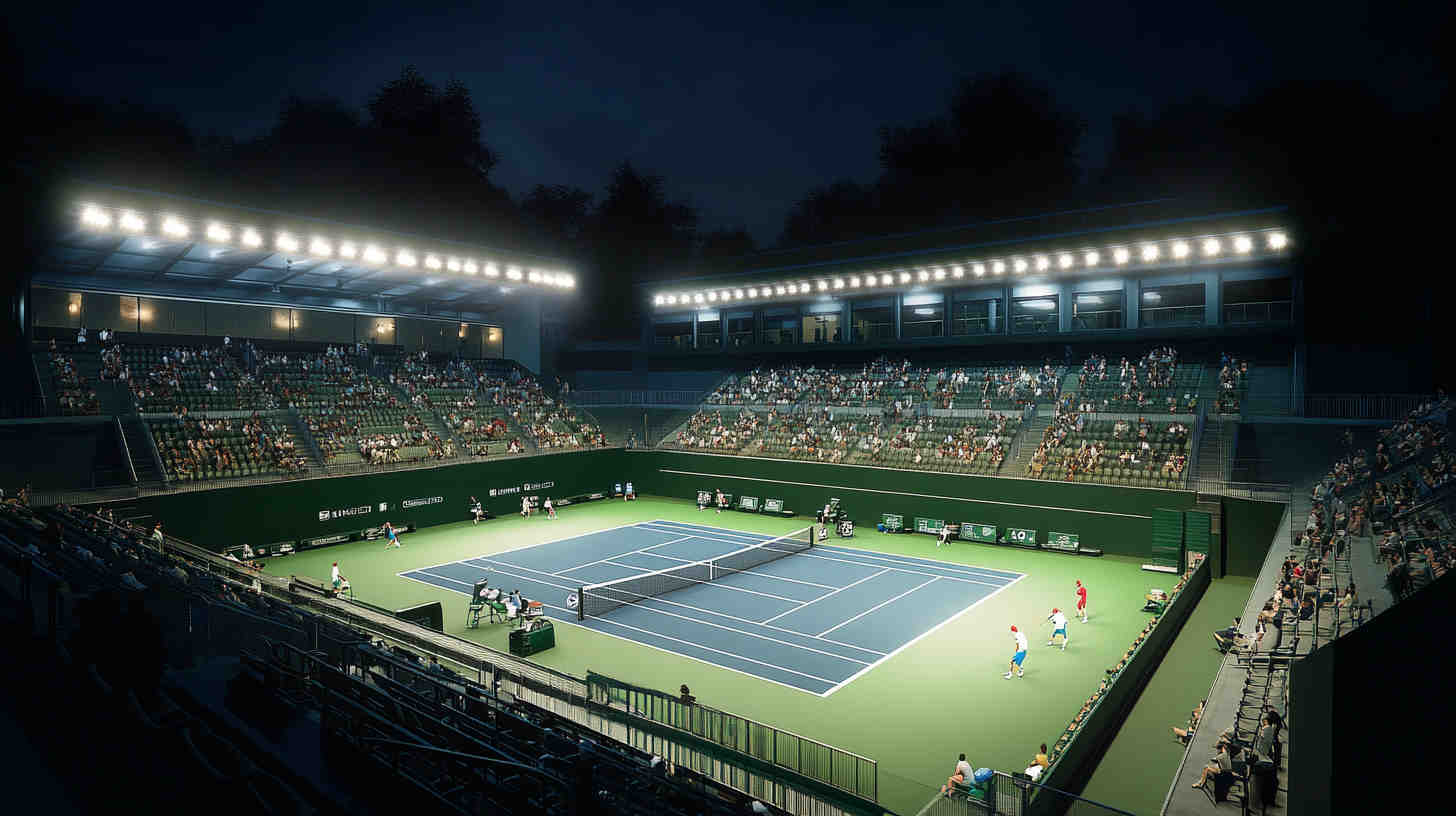
What are the IES recommended lighting levels for tennis courts?
The IES specifies different lighting levels for tennis courts depending on the level of play. For recreational tennis, a minimum of 30 lux is recommended. Competitive matches require at least 300 lux to maintain proper visibility. For professional or televised events, lighting levels should range between 1000 and 2000 lux to ensure clear viewing for both players and audiences. These lighting recommendations ensure that players can track the ball and movements accurately, regardless of the time of day or weather conditions.
How to Meet IES Standards for Sports Lighting
Meeting IES standards for sports lighting is essential for ensuring a safe, efficient, and high-performance environment for athletes and spectators. Adhering to these standards guarantees the correct illuminance levels, uniformity ratios, glare control5, and energy efficiency. Below are key steps to designing and implementing sports lighting that meets IES requirements.
1. Understand IES Standards and Guidelines
The first step in achieving compliance is understanding the specific IES requirements for your venue. The IES provides detailed guidelines on illuminance levels (measured in lux), uniformity ratios, glare limitations, and color rendering requirements. Whether you’re lighting a recreational tennis court, a professional stadium, or a local sports facility, following these guidelines ensures optimal performance and safety.
2. Choose the Right Lighting Technology
Selecting the appropriate lighting system is crucial. LEDs are the preferred choice for sports lighting due to their energy efficiency, longevity, and consistent brightness. When choosing LED fixtures, ensure they meet the recommended lux levels and provide uniform light distribution across the playing area. Advanced LED solutions also offer better glare control and color rendering, making them the best option for meeting IES standards.
3. Ensure Proper Illuminance Levels
Proper illuminance is necessary to meet IES standards. Recreational sports may only require 30 lux, while professional sports venues need anywhere from 300 to 1000 lux. Televised events require even higher lux levels, often exceeding 1000 lux. Using light meters or simulation software helps ensure that the lighting system provides the necessary brightness for safe and effective gameplay.
4. Achieve Proper Light Uniformity
Uniform lighting is critical in eliminating shadows and ensuring that all areas of the venue are evenly lit. The IES recommends a uniformity ratio of at least 0.6 for recreational settings and 0.7 for professional venues. Achieving this balance requires strategic light placement and adjustments to fixture height and angle. Lighting design software can help optimize uniformity, preventing dark spots or overly bright areas.
5. Control Glare
Glare reduction is essential to meet IES standards and maintain visibility for both players and spectators. To minimize glare, sports lighting systems should incorporate shielding, precise fixture placement, and the right type of LED fixtures. Choosing lights specifically designed for low glare output and positioning them carefully ensures a comfortable and distraction-free playing environment.
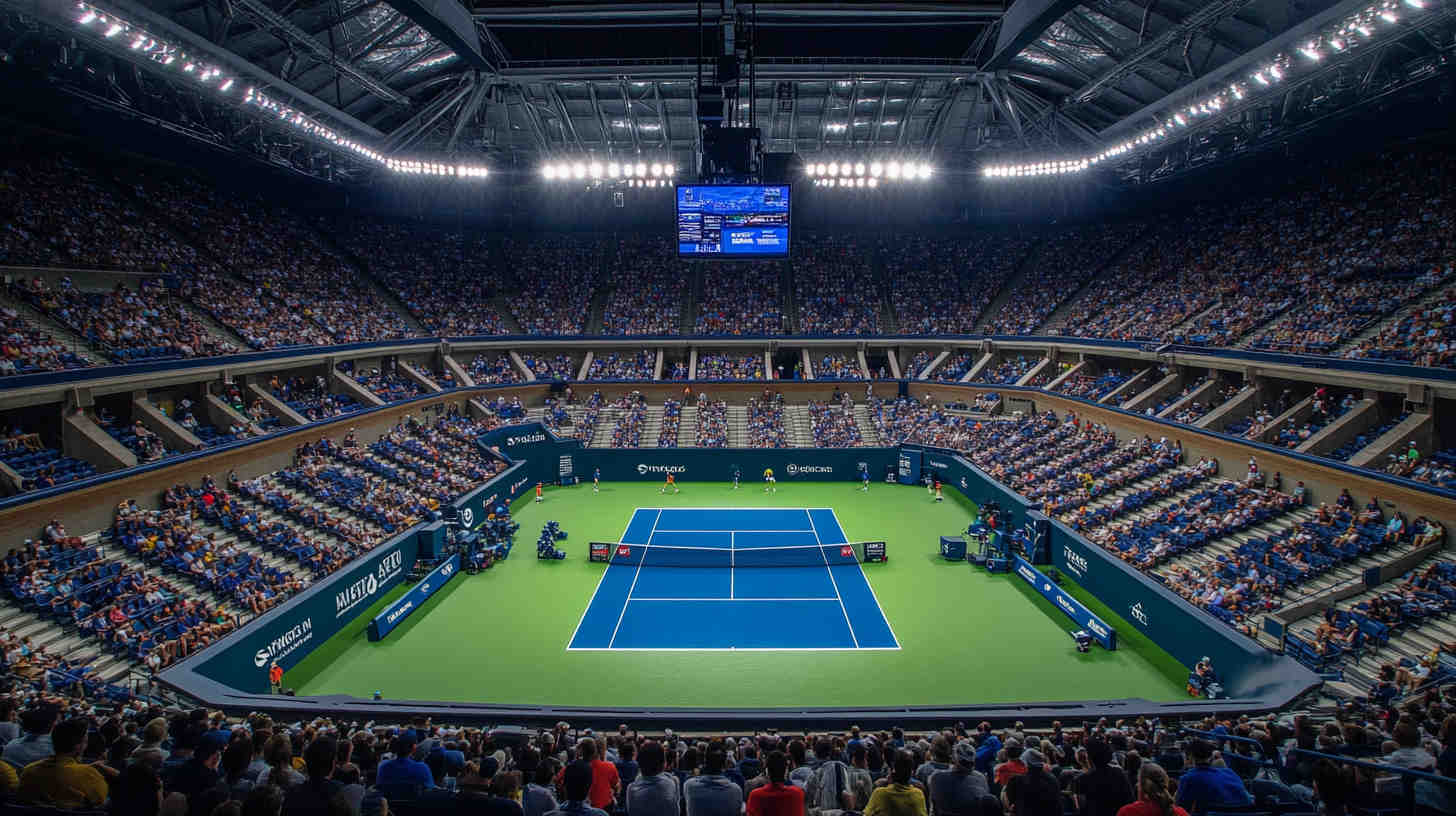
6. Focus on Color Rendering
Color rendering plays a crucial role in sports lighting, especially for professional games and television broadcasts. The IES suggests a CRI of at least 70 for general sports lighting and 80+ for professional or televised events. A high CRI improves visibility, allowing players to track the ball more effectively and enhancing the viewing experience for fans both in-person and on-screen.
7. Optimize Energy Efficiency
Energy-efficient lighting solutions help reduce operational costs and promote sustainability. The IES encourages using high-efficiency LED systems that provide the necessary lux levels with minimal energy consumption. Smart lighting technologies, such as motion sensors and dimmable LEDs, further improve efficiency while maintaining compliance with IES standards. Implementing energy-saving strategies not only benefits the venue financially but also supports environmental initiatives.
8. Perform Regular Maintenance and Testing
Even after installation, regular maintenance and testing are crucial to ensuring that the lighting system continues to meet IES standards. Routine checks should be conducted to verify illuminance levels, replace faulty fixtures, and clean light sources to maintain their efficiency. Ongoing inspections help prevent lighting failures and ensure that the sports facility remains safe and well-lit.
Meeting IES standards for sports lighting is essential for creating an optimal environment for athletes, spectators, and broadcasters. By following these guidelines—selecting the right technology, achieving proper brightness and uniformity, minimizing glare, ensuring accurate color rendering, and optimizing energy efficiency—you can design a lighting system that meets the highest industry standards. Whether upgrading an existing facility or planning a new installation, adhering to IES recommendations will ensure professional-quality lighting for any sports venue.
What is the standard lighting for a tennis court?
Standard tennis court lighting consists of multiple floodlights positioned to evenly illuminate the playing surface. This setup reduces shadows and ensures a well-lit environment for players. Depending on the court size and design, a typical setup includes 4 to 8 floodlights. These lights are carefully placed to maintain uniform brightness, minimize glare, and meet the necessary lux levels for safe and effective gameplay.

Outdoor Tennis Court Lighting Layout
What color temperature should the light be on a tennis court?
The ideal color temperature for tennis court lighting falls between 4000K and 5000K. This neutral white light minimizes glare while providing excellent visibility and color accuracy, making it easier for players to track the ball. For competitive and televised matches, a slightly higher color temperature (around 6000K) may be used, as it simulates daylight and provides even clearer illumination. Cooler color temperatures also help players maintain focus, especially during evening or night matches.
What is the standard Lux for a tennis court?
The required lux level for a tennis court depends on its usage:
- Recreational play: Minimum of 30 lux
- Practice sessions & amateur matches: Around 300 lux
- Professional & televised events: 1000–2000 lux
Higher lux levels ensure better visibility, improve gameplay accuracy, and enhance the viewing experience for spectators. Maintaining consistent lux levels is crucial to avoiding shadows and distractions during play.

How many watts are needed to light a tennis court?
The total wattage required to light a tennis court depends on the type and number of floodlights used. On average:
- Each floodlight typically requires 1000W to 2000W, producing 20,000 to 30,000 lumens.
- A standard full-size tennis court generally uses 8 to 12 floodlights.
- The total power consumption ranges from 10,000W to 20,000W, depending on the lighting design and required lux levels.
Using energy-efficient LED lighting can significantly reduce power consumption while maintaining high-quality illumination.
What height should tennis court lights be?
The height of tennis court lighting poles plays a crucial role in distributing light evenly across the playing surface. According to IES standards:
- Pole height should be between 12 to 16 meters (40 to 50 feet).
- Higher poles help ensure uniform light coverage, reducing shadows and minimizing glare.
- The correct height also prevents excessive brightness in players’ line of sight, enhancing visibility and comfort during matches.
Conclusion
Proper tennis court lighting is essential for maintaining a safe, professional, and enjoyable playing environment. Following IES standards ensures optimal lux levels, correct pole heights, and effective lighting placement for both recreational and competitive play.
Whether you’re setting up a new court or upgrading an existing one, adhering to these lighting guidelines will improve gameplay quality and visibility.
If you need expert advice or customized lighting solutions, feel free to reach out to us. Our team is here to help you achieve the perfect tennis court lighting setup.
Request A Free Quote Now!
Send us a message if you have any questions or request a quote. We will get back to you ASAP!
- Understanding lux levels is crucial for ensuring proper visibility in sports venues. Discover the specific requirements for different sports. ↩
- Explore how the IES sets standards that enhance safety and performance in sports lighting, ensuring optimal conditions for players and spectators. ↩
- Understanding CRI is vital for ensuring accurate color representation in sports lighting, enhancing visibility for players and viewers alike. ↩
- Exploring energy-efficient lighting solutions can help venues reduce costs and environmental impact while maintaining high-quality illumination. ↩
- Learning about glare control techniques can enhance visibility and comfort for both players and spectators in sports venues. ↩
